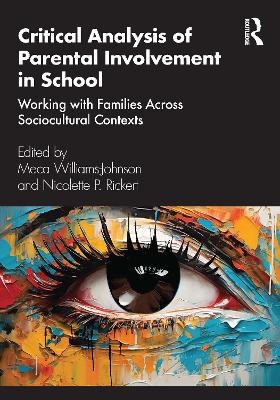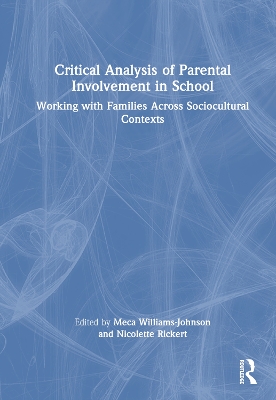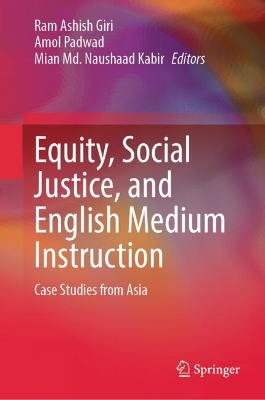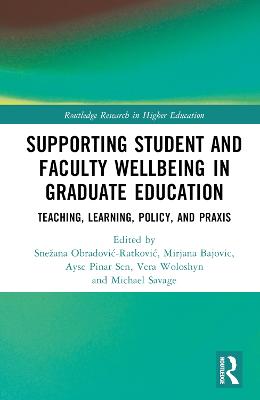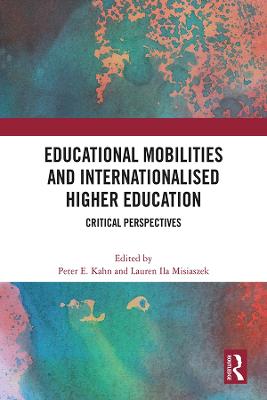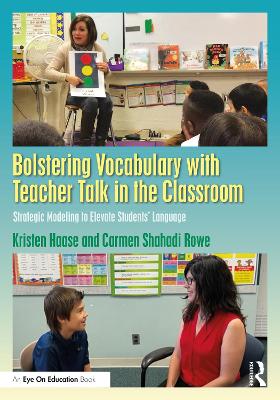Critical Issues in ELT
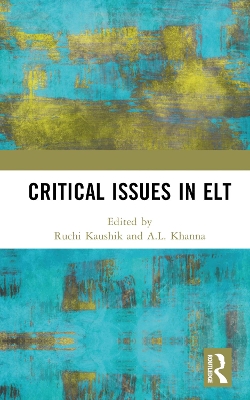 portes grátis
portes grátis
Critical Issues in ELT
Khanna, A.L.; Kaushik, Ruchi
Taylor & Francis Ltd
12/2024
346
Dura
9781032885681
15 a 20 dias
Descrição não disponível.
Acknowledgements
Contributors
Introduction
I. Multilingualism
1. To Teach or Not to Teach Code-Mixed English? Translanguaging Hindi-English
2. 'Warm Welcome or Cold Shoulder': Demystifying ('Positively Noxious') English in the Multilingual Indian Classroom
3. From a Monolingual to a Multilingual Approach in Language Teaching
II. Critical Pedagogy
4. Critical Pedagogy and English Language Teaching in India
5. Processes and Protocols of Discourse Oriented Pedagogy Towards Resisting Linguistic Imperialism
6. Critical Literacy as a Way of Negotiating Meanings with Stories
7. Making Daffodils Bloom for Everyone: The Flowering of Critical Pedagogy in the ESL Classroom
III. Continuing Professional Development
8. The Dimensions of Continuing Professional Development
9. Learner Feedback as a Tool for Teacher Learning and Continuing Professional Development
10. Data-led Reflection for Self-directed Continuous Professional Development
11. An Action Research Project Exploring Peer
Mentoring Enabling CPD 172
IV. Materials Development
12. Training Teachers to be Materials Writers
13. Designing Customized ESP Materials: Principles, Procedure and Practice
14. Translanguaging, Spices and Authentic Materials
V. Assessment and Evaluation
15. In Teachers' Hands: Where Formative Assessment
Comes to Life in Unforeseen Ways
16. Peer Feedback in L2 Writing
17. Giving Feedback to Treat ESL Writing as a Process: Ideas and Challenges
18. Assessment for Development through Portfolios
VI. Technology-aided Teaching and Learning
19. From Black Board to White Board and Beyond: The Role of ICTs in Reforming English Language Classrooms in Tamil Nadu
20. Bringing Digital Literacy into the ESL Classroom: Enhancing Language Learning Tasks using Web 2.0 Tools
21. Design-Based Research for Technology Enabled Language Learning: From Theory to Practice
22. Using Google Classroom as a Learning Management System: An Exploratory Study
VII. Inclusive Education
23. Inclusive Practices: Equitable Learning for All
24. Lessons in Disability: Acceptance and Inclusion
Contributors
Introduction
I. Multilingualism
1. To Teach or Not to Teach Code-Mixed English? Translanguaging Hindi-English
2. 'Warm Welcome or Cold Shoulder': Demystifying ('Positively Noxious') English in the Multilingual Indian Classroom
3. From a Monolingual to a Multilingual Approach in Language Teaching
II. Critical Pedagogy
4. Critical Pedagogy and English Language Teaching in India
5. Processes and Protocols of Discourse Oriented Pedagogy Towards Resisting Linguistic Imperialism
6. Critical Literacy as a Way of Negotiating Meanings with Stories
7. Making Daffodils Bloom for Everyone: The Flowering of Critical Pedagogy in the ESL Classroom
III. Continuing Professional Development
8. The Dimensions of Continuing Professional Development
9. Learner Feedback as a Tool for Teacher Learning and Continuing Professional Development
10. Data-led Reflection for Self-directed Continuous Professional Development
11. An Action Research Project Exploring Peer
Mentoring Enabling CPD 172
IV. Materials Development
12. Training Teachers to be Materials Writers
13. Designing Customized ESP Materials: Principles, Procedure and Practice
14. Translanguaging, Spices and Authentic Materials
V. Assessment and Evaluation
15. In Teachers' Hands: Where Formative Assessment
Comes to Life in Unforeseen Ways
16. Peer Feedback in L2 Writing
17. Giving Feedback to Treat ESL Writing as a Process: Ideas and Challenges
18. Assessment for Development through Portfolios
VI. Technology-aided Teaching and Learning
19. From Black Board to White Board and Beyond: The Role of ICTs in Reforming English Language Classrooms in Tamil Nadu
20. Bringing Digital Literacy into the ESL Classroom: Enhancing Language Learning Tasks using Web 2.0 Tools
21. Design-Based Research for Technology Enabled Language Learning: From Theory to Practice
22. Using Google Classroom as a Learning Management System: An Exploratory Study
VII. Inclusive Education
23. Inclusive Practices: Equitable Learning for All
24. Lessons in Disability: Acceptance and Inclusion
Este título pertence ao(s) assunto(s) indicados(s). Para ver outros títulos clique no assunto desejado.
Critical Pedagogy;Translanguaging;Google Classroom;ESP Unit
Acknowledgements
Contributors
Introduction
I. Multilingualism
1. To Teach or Not to Teach Code-Mixed English? Translanguaging Hindi-English
2. 'Warm Welcome or Cold Shoulder': Demystifying ('Positively Noxious') English in the Multilingual Indian Classroom
3. From a Monolingual to a Multilingual Approach in Language Teaching
II. Critical Pedagogy
4. Critical Pedagogy and English Language Teaching in India
5. Processes and Protocols of Discourse Oriented Pedagogy Towards Resisting Linguistic Imperialism
6. Critical Literacy as a Way of Negotiating Meanings with Stories
7. Making Daffodils Bloom for Everyone: The Flowering of Critical Pedagogy in the ESL Classroom
III. Continuing Professional Development
8. The Dimensions of Continuing Professional Development
9. Learner Feedback as a Tool for Teacher Learning and Continuing Professional Development
10. Data-led Reflection for Self-directed Continuous Professional Development
11. An Action Research Project Exploring Peer
Mentoring Enabling CPD 172
IV. Materials Development
12. Training Teachers to be Materials Writers
13. Designing Customized ESP Materials: Principles, Procedure and Practice
14. Translanguaging, Spices and Authentic Materials
V. Assessment and Evaluation
15. In Teachers' Hands: Where Formative Assessment
Comes to Life in Unforeseen Ways
16. Peer Feedback in L2 Writing
17. Giving Feedback to Treat ESL Writing as a Process: Ideas and Challenges
18. Assessment for Development through Portfolios
VI. Technology-aided Teaching and Learning
19. From Black Board to White Board and Beyond: The Role of ICTs in Reforming English Language Classrooms in Tamil Nadu
20. Bringing Digital Literacy into the ESL Classroom: Enhancing Language Learning Tasks using Web 2.0 Tools
21. Design-Based Research for Technology Enabled Language Learning: From Theory to Practice
22. Using Google Classroom as a Learning Management System: An Exploratory Study
VII. Inclusive Education
23. Inclusive Practices: Equitable Learning for All
24. Lessons in Disability: Acceptance and Inclusion
Contributors
Introduction
I. Multilingualism
1. To Teach or Not to Teach Code-Mixed English? Translanguaging Hindi-English
2. 'Warm Welcome or Cold Shoulder': Demystifying ('Positively Noxious') English in the Multilingual Indian Classroom
3. From a Monolingual to a Multilingual Approach in Language Teaching
II. Critical Pedagogy
4. Critical Pedagogy and English Language Teaching in India
5. Processes and Protocols of Discourse Oriented Pedagogy Towards Resisting Linguistic Imperialism
6. Critical Literacy as a Way of Negotiating Meanings with Stories
7. Making Daffodils Bloom for Everyone: The Flowering of Critical Pedagogy in the ESL Classroom
III. Continuing Professional Development
8. The Dimensions of Continuing Professional Development
9. Learner Feedback as a Tool for Teacher Learning and Continuing Professional Development
10. Data-led Reflection for Self-directed Continuous Professional Development
11. An Action Research Project Exploring Peer
Mentoring Enabling CPD 172
IV. Materials Development
12. Training Teachers to be Materials Writers
13. Designing Customized ESP Materials: Principles, Procedure and Practice
14. Translanguaging, Spices and Authentic Materials
V. Assessment and Evaluation
15. In Teachers' Hands: Where Formative Assessment
Comes to Life in Unforeseen Ways
16. Peer Feedback in L2 Writing
17. Giving Feedback to Treat ESL Writing as a Process: Ideas and Challenges
18. Assessment for Development through Portfolios
VI. Technology-aided Teaching and Learning
19. From Black Board to White Board and Beyond: The Role of ICTs in Reforming English Language Classrooms in Tamil Nadu
20. Bringing Digital Literacy into the ESL Classroom: Enhancing Language Learning Tasks using Web 2.0 Tools
21. Design-Based Research for Technology Enabled Language Learning: From Theory to Practice
22. Using Google Classroom as a Learning Management System: An Exploratory Study
VII. Inclusive Education
23. Inclusive Practices: Equitable Learning for All
24. Lessons in Disability: Acceptance and Inclusion
Este título pertence ao(s) assunto(s) indicados(s). Para ver outros títulos clique no assunto desejado.

